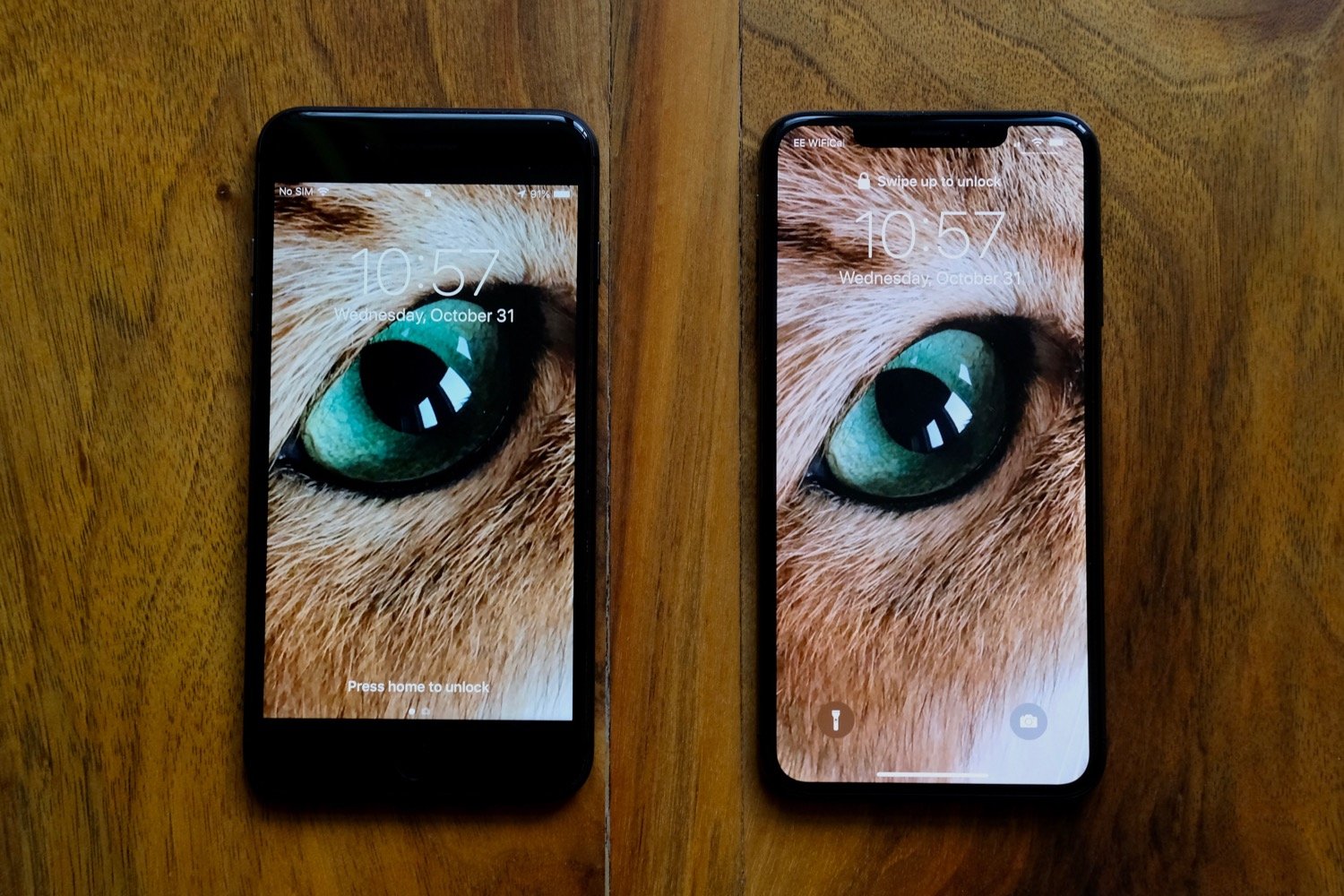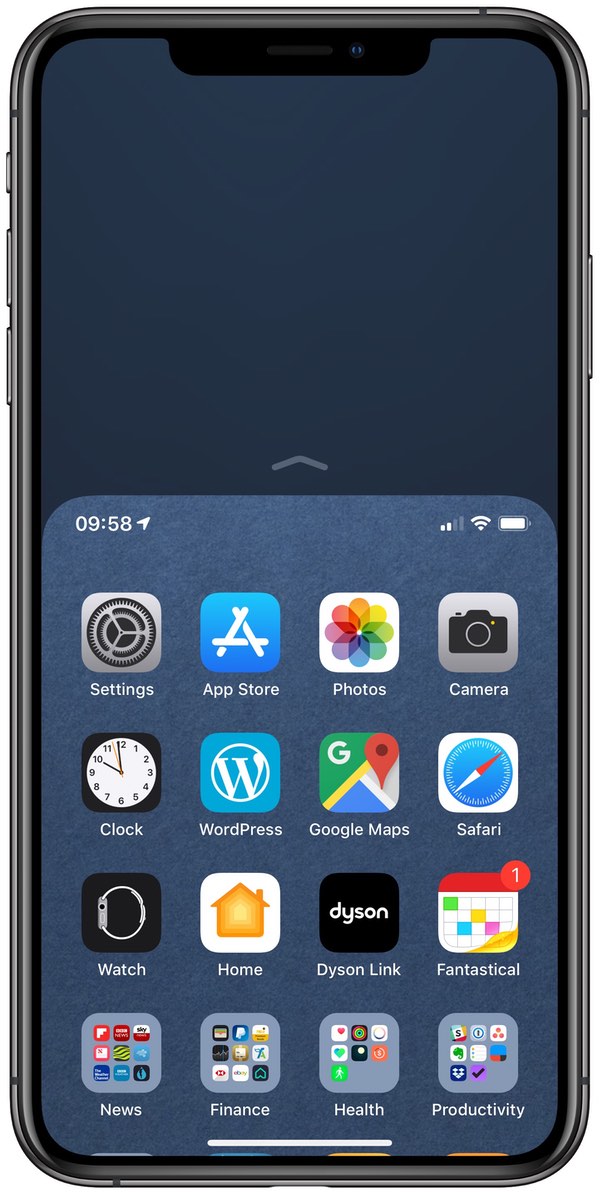Review: iPhone XS Max is a max iPhone at a max price
Posted on
by
Kirk McElhearn
With the second iteration of Apple’s iPhone X line, the company moved from a single device to three versions: the XS, the XS Max, and the lower-priced XR. The two new flagship phones, the iPhone XS and XS Max, are almost exactly the same other than for the size. The larger display doesn’t let you see a broader scene, it’s just bigger.
The iPhone XS is about the same size as last year’s iPhone X, and the XS Max is a hair smaller than the 8 Plus and 7 Plus models. Respectively, the iPhone XS, XS Mac, and 8 Plus have displays that are 5.8″, 6.5″, and 5.5″, so even the smaller model has a larger display than the biggest previous iPhone. However, the display area is taller, so it’s not an easy comparison. You could go for the iPhone XS if you want the same size display as the larger standard iPhone model, or the XS Max to have the same size phone as the Plus models with a much larger display.

(Left: iPhone 8+; right: iPhone XS Max.)
The iPhone XS Max is a bit heavier than the 8+ – 6 grams more – and the XS model is a few grams heavier than the iPhone X. But you won’t notice this difference.
A max display
I didn’t have the iPhone X with its OLED display and discovering the quality of this display was a revelation. The colors are sharper as well as the brightness even at wider viewing angles, and the contrast is exceptional. But is this really necessary on an iPhone? With an iPad, where you will be seeing a larger display, the more even illumination would be a plus, but it almost seems like overkill on the iPhone considering how much it increases the cost.

(The iPhone’s OLED display has rich colors and excellent contrast.)
Face ID
Most people upgrade their phones every two or three years, so they skip generations and may only discover important new features after they’ve been around for a year or more. That’s the case with Face ID for me. Since I didn’t get the iPhone X last year, Face ID is a welcome change. It takes a couple of minutes to get used to not having a home button, but once you’ve figured it out it becomes second nature. (Apple explains all the gestures you need to know on an iPhone without a home button here.)
Face ID is faster on this year’s iPhones and the ability to not only unlock the iPhone but also to approve the use of passwords – in iOS 12, you have to use either Touch ID or Face ID to allow passwords to be entered in websites or apps – makes for a much smoother experience than using Touch ID. There are some people for whom Touch ID didn’t work reliably and Face ID will make their use of the iPhone much more efficient.
Speed and usability
Every year, Apple says that the new iPhone is the fastest one ever, and this is, of course, always true because of the progress they make on the devices’ internals. It’s a bit difficult to judge the speed of an iPhone because the operating systems and apps make a lot of demands on the device, and with each new generation of iOS, older models run a bit more slowly. But the iPhone XS and XS Max are as fast as you probably need.
With these taller iPhones, you may want to activate the Reachability feature (in Settings > General > Accessibility). When you do this, a short swipe up from the bottom edge brings the content of the display down halfway if you want to reach it with one hand.

The problem with this is that you have to bend your thumb a lot to reach that bottom area to activate reachability, and it’s not practical. With phones this size, it’s best to use two hands when necessary; the days of the true one-handed phones are gone. I would recommend arranging your app icons so the apps you use most often are near the bottom of the screen so you can launch them with one hand.
Camera
The dual camera that has been on iPhone Plus models for a couple of years has been improved, notably with some serious software enhancements. What Apple calls Smart HDR allows you to take photos where the lighting varies greatly from dark to light, blending multiple exposures to create more evenly lit photos. I find the colors of photos on the iPhone XS Max to be nicer and richer than on the 8+. See this article for more on the new camera features in the iPhone XS and XS Max.
Price
The iPhone XS and XS Max are expensive phones starting at $999 and $1,099 and reaching $1,449 for the XS Max with 512 GB storage. Apple has made it easier to swallow these prices with their iPhone upgrade program, but this is still a lot of money for a pocket computer. Most people won’t need 512 GB storage; that’s only necessary if you want to shoot a lot of video or take lots of movies with you. Add another $200 if you want AppleCare+ – which you really should have, because of the cheaper repairs if you damage your phone – and you’re looking at a phone that may cost $1,650.
So is this new iPhone for you? If you have an iPhone X, it’s probably not worth upgrading, but if you have an older iPhone check it out. The other option is the more affordably priced iPhone XR starting at $749 which lacks the OLED display and dual camera, but for the most part has the same internals. As is often the case, Apple has a two-tier approach to its newest models and there’s something for everyone.